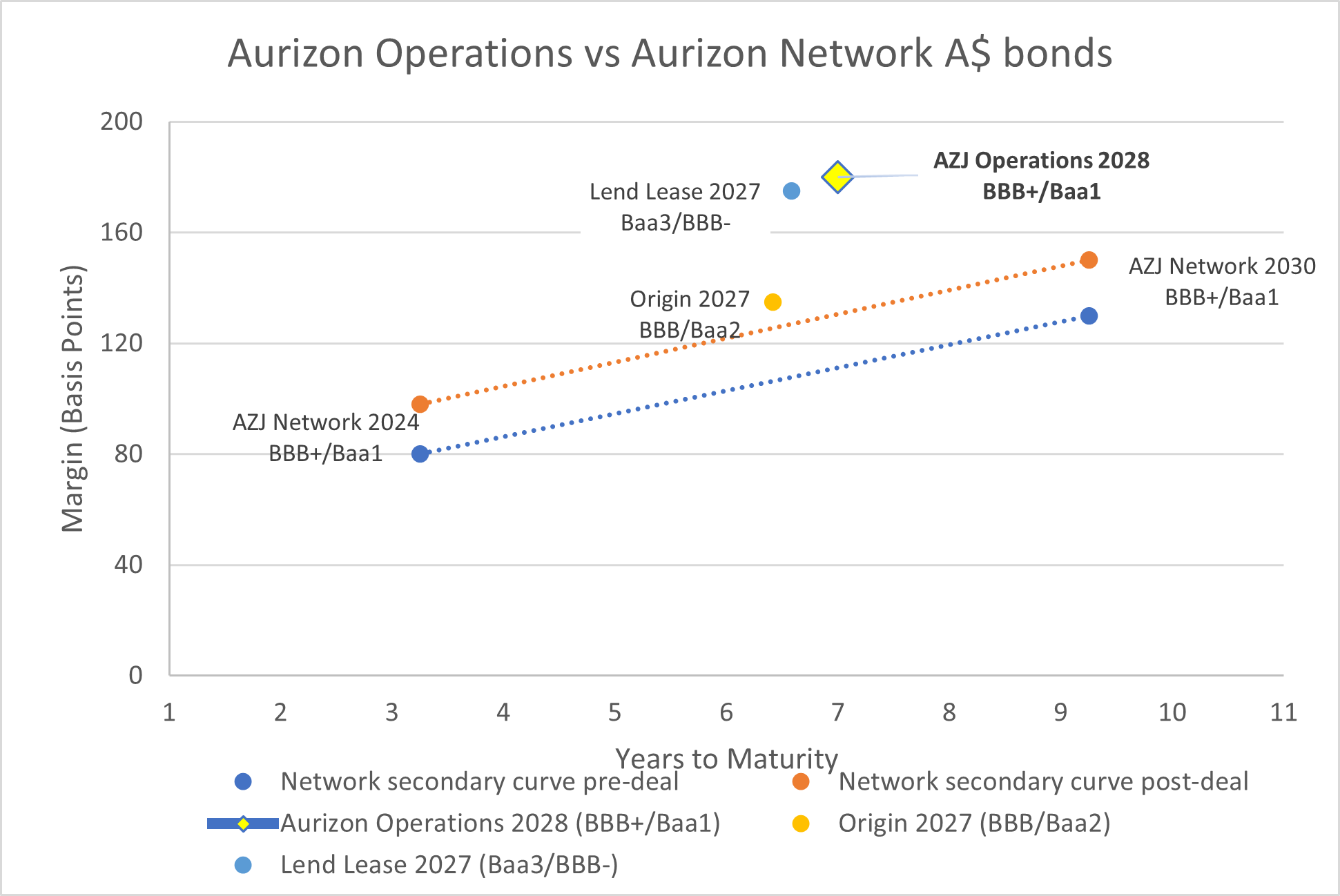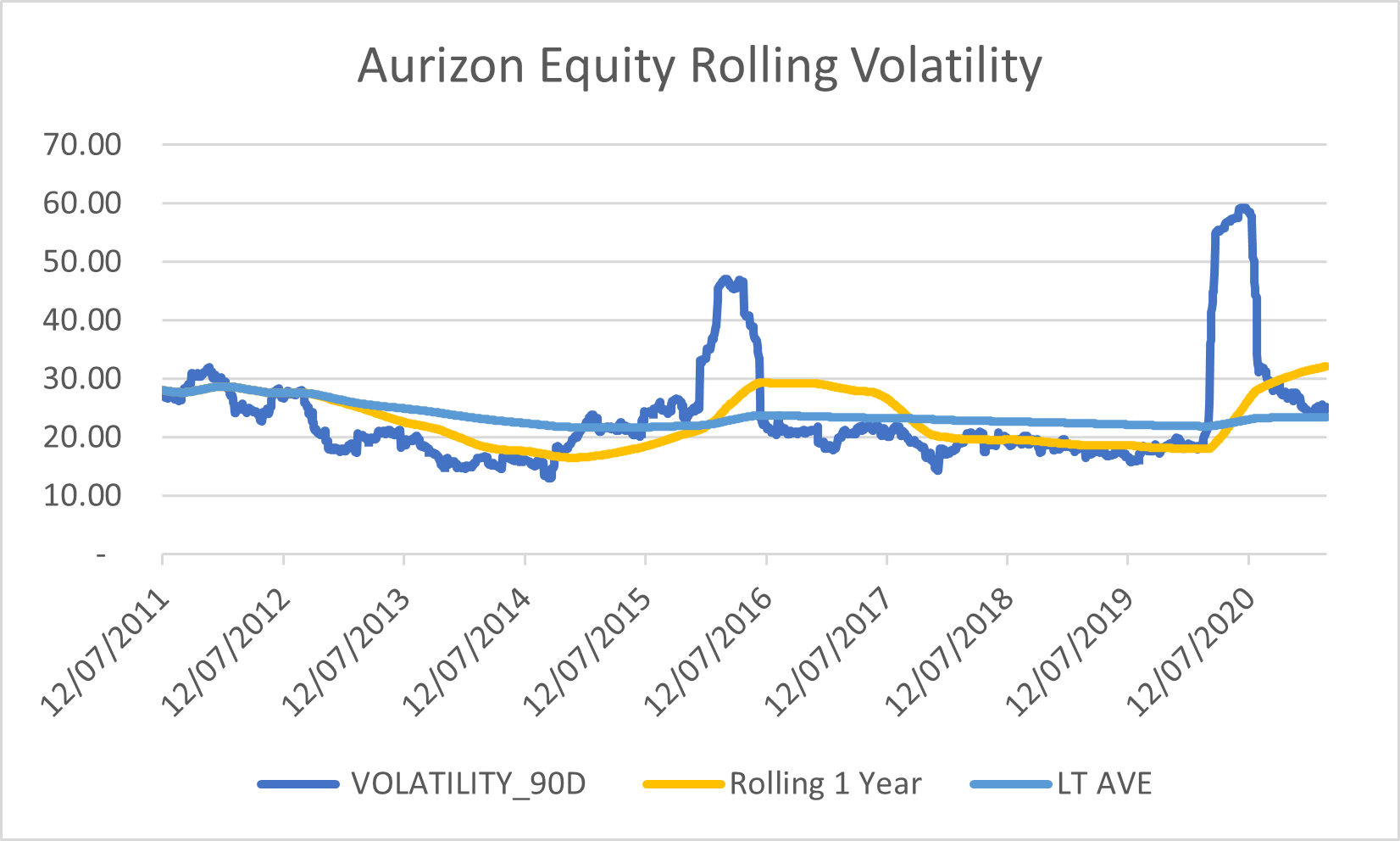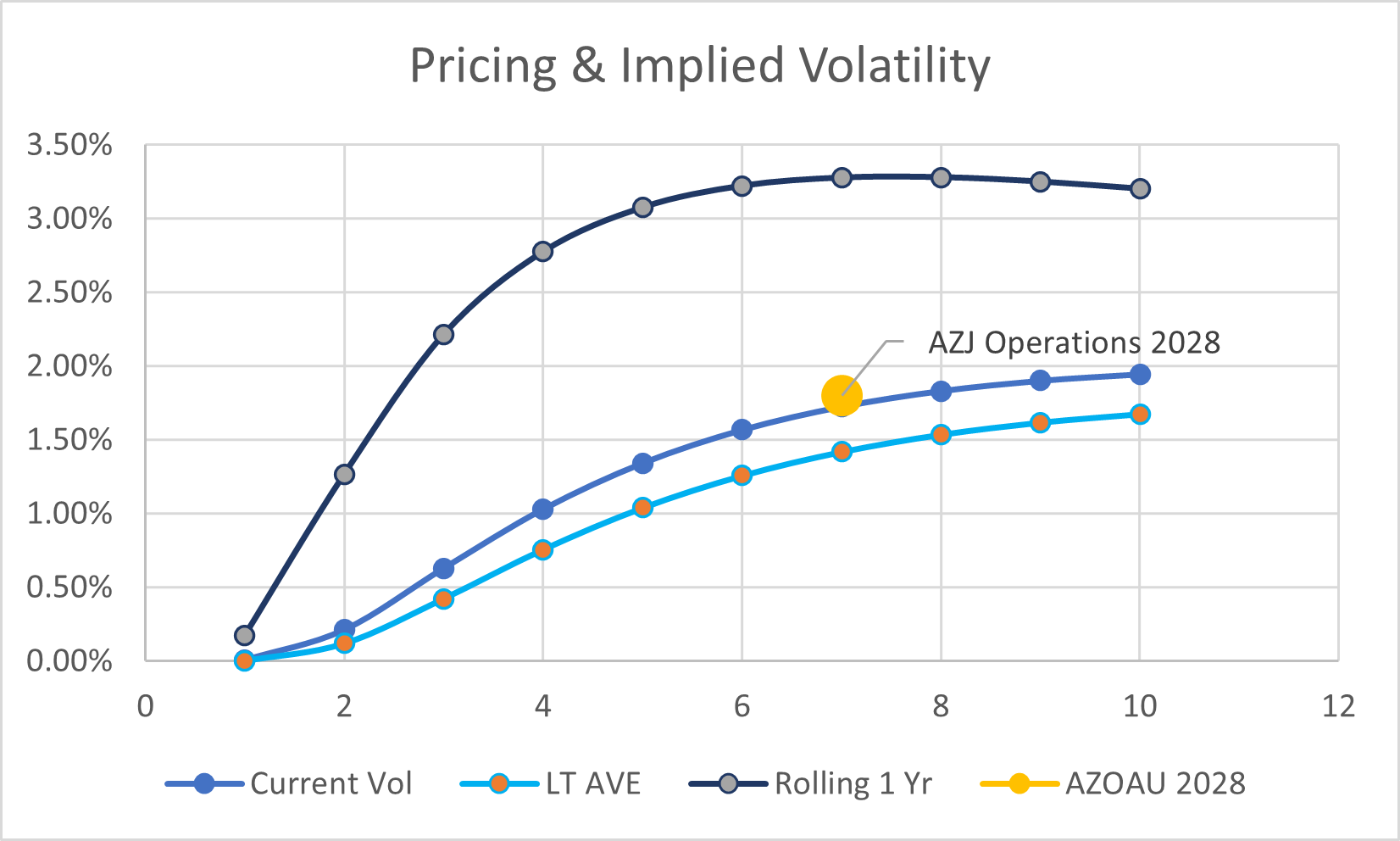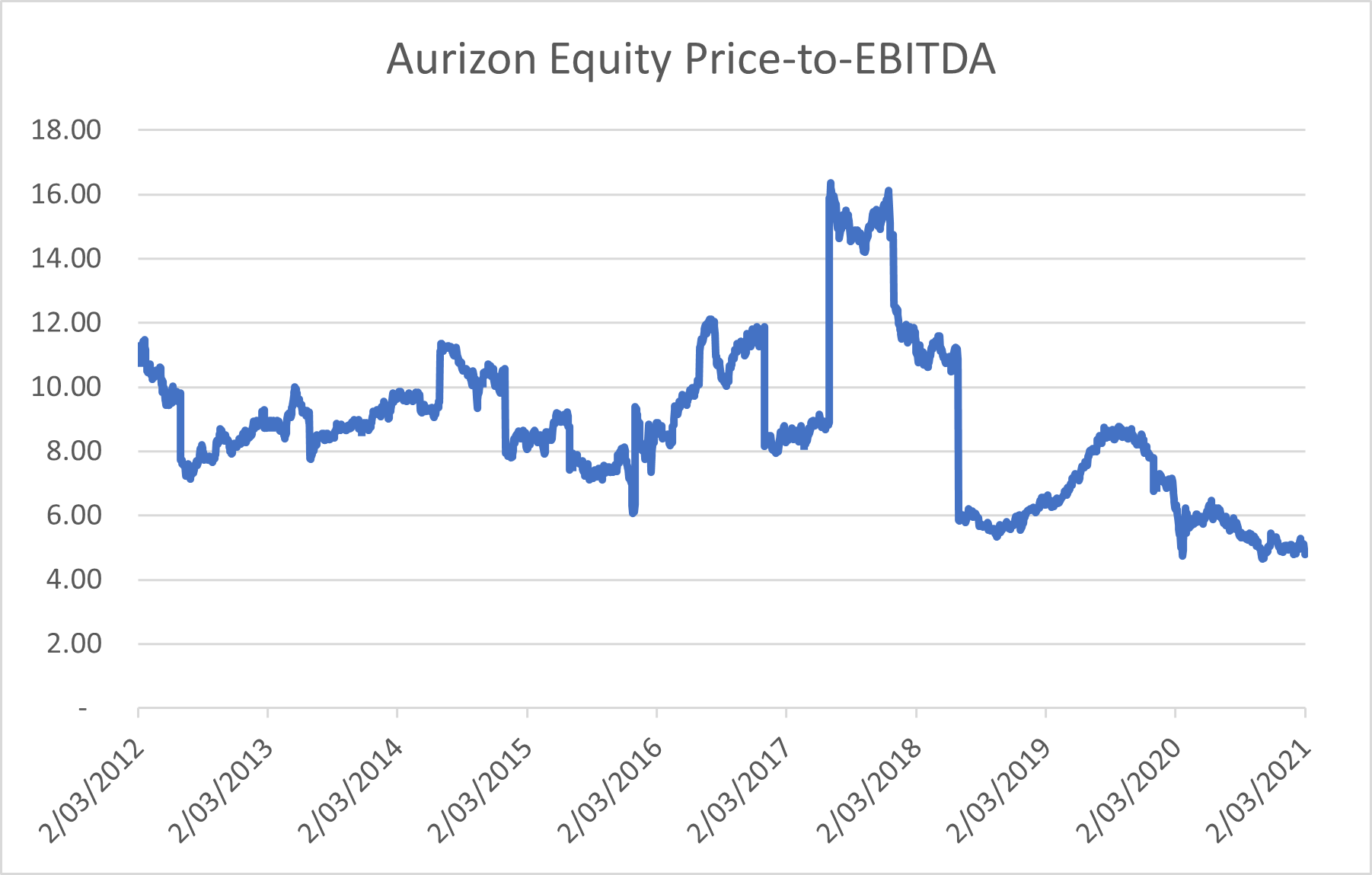From the realm of risk to the realm of opportunity
Have ESG-related structural factors created an insurmountable obstacle to investing within some sectors?
That’s the key question raised by a recent, finely detailed, Aurizon Operations case study, outlined below.
Certainly, it appears that integrating environmental, social & governance (ESG) factors into the investment process is now unavoidable from a practical standpoint, and, with buyers of assets within certain sectors shrinking, there has arisen a fair expectation from credit market participants that these risks need to be compensated.
In the article below we explore whether the case study is a one-off or an increasingly common example of when market prices dislocate due to ESG concerns and ask whether these risks (or opportunities) are likely to continue to present themselves as the renewable energy transition evolves.
A premium to take on risk
Earlier this month, Aurizon Operations Ltd, the above rail operations of Aurizon Holdings Ltd issued its inaugural debt capital market bond: a A$500 million 7-year senior unsecured medium-term note at a fixed rate of 3% (comprising of a margin of 180 basis points over asset-swap).
In an ultra-low interest rate environment, the Aurizon Operations deal priced at more than 60 basis points wider (i.e. cheaper) than initially expected by sell-side brokers.
Not surprisingly, sister company Aurizon Network - the below rail operator/owner of the regulated Central Queensland Coal Network - was negatively impacted as its bonds sold-off by more than 20 basis points (approx. -1.0 % to -1.5%) following the deal’s official launch. In the end, the new Aurizon Operations bond priced about 40 basis points cheaper than the Aurizon Network secondary bond curve.
For context, this pricing level is 50 basis points wider than the prevailing BBB-curve, 50 basis points wider than one-notch lower-rated Origin Energy Ltd (rated BBB/Baa2) and slightly cheaper still than two-notch lower-rated Lend Lease Corp Ltd (rated Baa3/BBB-).
So, while Aurizon Operations was still able to borrow at a historically favourable interest rate, the pricing outcome shows investment managers are now demanding a premium to take on coal exposure risk and are looking beyond credit ratings when dealing with these securities.

A question of volatility
As above, the question that the case study brings to the fore is whether these ESG related structural factors significantly impede investing within these sectors?
We believe asset-volatility holds a clue as it can often be very instructive in inferring the level of uncertainty around a company’s outlook. In the case of Aurizon Holdings, its prevailing rolling 1-year volatility sits at a historically high level of 34%, which is well above the long-term average of 24%.

While some of this increase is a function of general market volatility, it still begs the question of whether the outlook over the next 10 years is more uncertain than the last 10 years, and if so, will this likely result in Aurizon’s long-term volatility continuing to rise?
The question of volatility is particularly important when assessing a company’s probability of default. Higher implied volatility infers that credit quality can deteriorate “faster” and should result in credit investors being better compensated for the risk.
Using a range of volatility assumptions, we can extrapolate an output around the fair value for the debt of Aurizon (the X-axis relates to the term and Y-axis relates to the fair value for default risk). For example, using the rolling 1-year average volatility assumption of 34% requires a much higher level of compensation for default risk than using the long-term average or current volatility (which is closer to 24%).

The equity market’s view around Aurizon’s enterprise value also tells an interesting story; while there has been some cyclical volatility, the reality is that enterprise value sits at 2013 levels. Meanwhile, in Price-to-EBITDA terms, the market is now valuing the cash-flow of this business to be well below the long-term average.
Is the equity market making a forward-looking statement about the increasing uncertainty around the business’s long-term ability to generate cash-flows, and what does this mean for enterprise value?

From a credit investor’s perspective, the key factors relate to the security of the lend and whether the level of compensation is adequate in capturing these concerns around rising uncertainty.
It seems that both enterprise value and volatility of the underlying equity do reflect environmental concerns relating to coal. These concerns are well documented and front of mind, which should give investors greater certainty that they are in the price.
In addition, in the case of Aurizon Operations, the company’s credit outlook is supported by its long-term take-or-pay coal contracts with large global mining companies, which provides some cash flow certainty. The strong performance of its growing bulk commodities business should also provide some diversity away from coal, while the company’s plan to transition its fleet of locomotives to electric power will further reduce its carbon footprint. Aurizon also benefits from a sound corporate governance structure and conservative financial policy which will provide some financial buffer in times of stress.
Conclusion
In conclusion, the Aurizon case study is a good example of when market prices change due to ESG concerns. These risks (or opportunities) are likely to continue to present themselves as the renewable energy transition evolves.
The key challenge for investors is how to determine the appropriate level of compensation for the additional risks taken. Indeed, various investors (rightly or wrongly) are increasingly applying negative ESG screens to certain sectors, deeming them un-investable.
This is not consistent with our ESG policy, which values the role we play as investors in a sustainable energy transition and in supporting ESG aware companies, such as Aurizon, through their carbon reduction efforts.
This wire was co-written with Adrian Chow, responsible for the bottom-up credit research and the integration of environmental, social, and governance (ESG) risks into Realm portfolios.
The Realm responsible investing approach
Realm has a responsibility to support the stable transition toward long-term objectives that aim to provide a sustainable future for all. Click 'FOLLOW' below for more of our insights.

